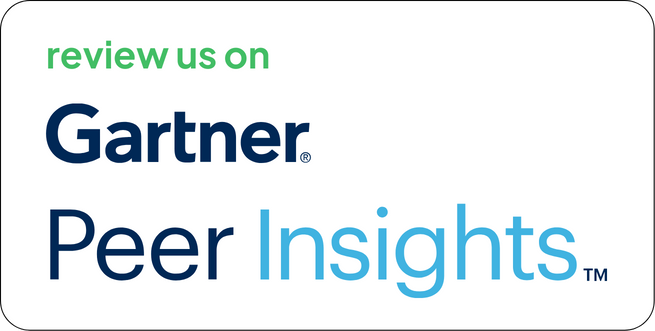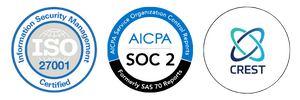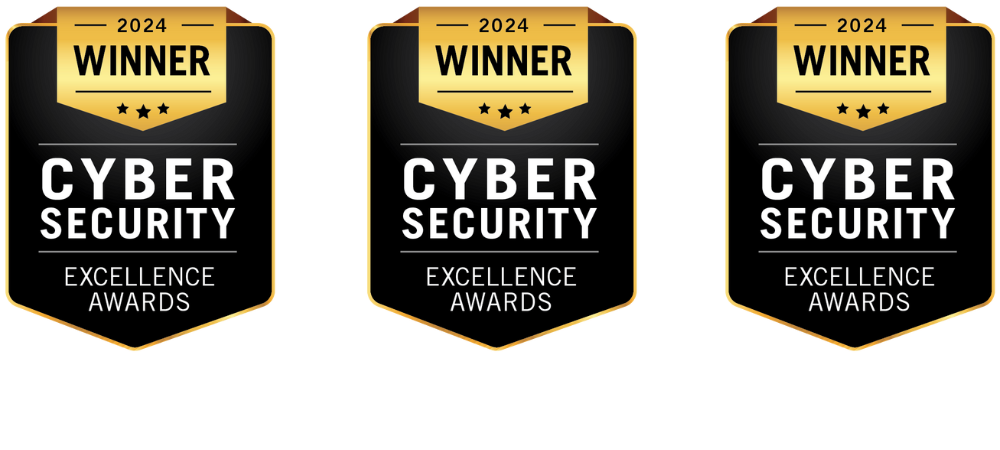Are you confident your vulnerability management solution is truly effective, or do you sometimes feel it’s falling short? Many companies invest time and resources in securing their systems, yet vulnerability management mistakes can leave them exposed to unseen threats.
Whether you’re refining an existing system or implementing a new one, avoiding these common pitfalls can make all the difference.
Are you prioritizing the right vulnerabilities? Do you have a clear view of your assets, or is something slipping through the cracks? These critical gaps can lead to costly security risks.
Let’s break down the top 5 vulnerability management mistakes companies make and how to ensure you’re not one of them!
1. Lack of Prioritization
The Mistake
One of the most common errors in vulnerability management is treating all vulnerabilities as if they are of equal importance. This lack of vulnerability priortization often stems from a uniform approach to addressing vulnerabilities, where every identified issue is tackled with the same urgency and resources. As a result, companies might end up expending significant effort on minor vulnerabilities while neglecting critical ones that pose a higher risk.
Why It Matters
Not all vulnerabilities carry the same level of risk. Some may be easily exploitable and have severe consequences, while others might be less critical or more difficult to exploit. Prioritizing vulnerabilities is essential for effective risk management. If high-risk vulnerabilities are not addressed promptly, they can become entry points for attackers, leading to significant security breaches, data loss, or financial damage.
Without prioritization, security teams can experience several vulnerability management mistakes:
- Resource Drain: Time and resources are wasted on low-risk vulnerabilities, diverting attention from more critical issues.
- Increased Exposure: Critical vulnerabilities that are not promptly addressed can lead to serious security incidents.
- Operational Inefficiency: An unstructured approach to vulnerability management can lead to confusion and inefficiency within the security team.
How to Avoid It
To effectively prioritize vulnerabilities, organizations should adopt risk-based vulnerability management solution that considers various factors, including:
- Exploitability: Evaluate how easily a vulnerability can be exploited. Vulnerabilities that are publicly known and have available exploits should be given higher priority.
- Impact: Assess the potential impact of a vulnerability on the organization. High-impact vulnerabilities that could lead to significant data breaches or operational disruption should be prioritized.
- Context: Consider the specific context of your environment. A vulnerability affecting critical systems or sensitive data should be addressed more urgently compared to those affecting less critical components.
- Threat Intelligence: Utilize threat intelligence to understand the current threat landscape. If certain vulnerabilities are being actively exploited by attackers, they should be prioritized for remediation.
- Risk Scoring: Implement risk scoring frameworks that provide a quantitative measure of vulnerability risk. Tools and methodologies such as the Common Vulnerability Scoring System (CVSS) can help in assigning risk scores and prioritizing remediation efforts.
- Integration with Business Objectives: Align vulnerability prioritization with business objectives and critical assets. Prioritizing vulnerabilities that impact core business functions or valuable assets ensures that security efforts are in line with organizational priorities.
Practical Steps to Implement Prioritization
- Adopt a Risk-Based Framework: Implement a risk-based framework for assessing and prioritizing vulnerabilities. This should include risk assessment tools and methodologies that align with your organization’s specific needs.
- Automate Where Possible: Use automated vulnerability management tools that provide risk assessments and prioritize vulnerabilities based on predefined criteria. Automation can help streamline the process and ensure consistent application of prioritization principles.
- Regularly Review and Update: Regularly review and update your prioritization criteria based on changes in the threat landscape, organizational priorities, and emerging vulnerabilities. Continuous assessment ensures that your approach remains effective and relevant.
2. Overlooking Asset Inventory
The Mistake
One of the most common vulnerability management mistakes is neglecting a comprehensive and up-to-date asset inventory. Without a clear record of all hardware, software, and network devices, organizations risk leaving critical assets unprotected.
Failing to track IT components accurately can lead to blind spots, making it difficult to prioritize vulnerabilities effectively. An outdated or incomplete inventory results in security gaps, where un-managed or forgotten assets become easy targets for attackers.
By maintaining a detailed and continuously updated asset inventory, businesses can improve visibility, enhance risk assessment, and ensure that security efforts are focused on the most critical areas.
Why It Matters
An accurate asset inventory is foundational to effective vulnerability management. Here’s why neglecting it can be detrimental:
- Incomplete Visibility: Without a comprehensive inventory, organizations may not be aware of all the assets that need to be assessed for vulnerabilities. This can lead to gaps in vulnerability scanning and management efforts.
- Missed Vulnerabilities: Assets that are not documented or tracked may contain vulnerabilities that go undetected. If these assets are compromised, it can lead to severe security breaches.
- Difficulty in Prioritization: An accurate inventory is crucial for understanding the criticality of different assets. Without it, organizations may struggle to prioritize vulnerabilities effectively, increasing the risk of Vulnerability Management Mistakes that leave sensitive assets exposed. Ensuring a well-maintained asset inventory helps in aligning security efforts with business priorities.
- Regulatory and Compliance Issues: Many regulations and standards require organizations to maintain an up-to-date inventory of assets. Failure to do so can result in non-compliance and potential legal or financial repercussions.
How to Avoid It
To avoid the pitfalls of overlooking asset inventory, organizations should implement the following best practices:
- Automate Asset Discovery: Utilise automated asset discovery tools to identify and catalog all hardware and software components within your environment. These tools can provide real-time visibility and keep your asset inventory updated as new assets are introduced.
- Maintain a Comprehensive Inventory: Ensure that your asset inventory includes all types of assets, such as servers, workstations, network devices, applications, and cloud resources. Each entry should include relevant details such as asset type, location, owner, and configuration.
- Regularly Update the Inventory: Implement processes for regularly reviewing and updating the asset inventory. This should include adding new assets, removing decommissioned ones, and updating details for existing assets to reflect changes in their status or configuration.
- Integrate with Vulnerability Management Tools: Ensure that your asset inventory is integrated with your vulnerability management tools. This integration allows for seamless scanning and assessment of all assets and ensures that vulnerabilities are identified and managed in the context of your entire environment.
- Implement Change Management Procedures: Establish change management procedures to ensure that any changes to your IT environment, such as new deployments or modifications, are promptly reflected in your asset inventory. This helps maintain accuracy and completeness.
- Conduct Regular Audits: Perform regular audits of your asset inventory to verify its accuracy. These audits can help identify discrepancies and ensure that all assets are accounted for and correctly documented.
Practical Steps to Implement Asset Inventory Management
- Deploy Asset Discovery Tools: Invest in asset discovery solutions that can automatically detect and catalogue assets across your network, including those that are often overlooked or hard to track.
- Create and Maintain Detailed Records: Develop a standardised format for asset records and ensure that all necessary details are captured. This should include information on asset types, configurations, and ownership.
- Coordinate with Other Teams: Work closely with IT, operations, and other relevant teams to ensure that asset information is accurately recorded and updated. Collaboration can help in capturing a complete picture of the IT environment.
3. Ignoring Configuration Issues
The Mistake
Ignoring configuration issues refers to the oversight of misconfigurations in systems and applications during the vulnerability management lifecycle. This mistake occurs when organizations focus primarily on software vulnerabilities without addressing potential security risks arising from incorrect or suboptimal configurations.
Why It Matters
Configuration issues can be as critical as unpatched software vulnerabilities, if not more so. Here’s why overlooking configuration problems can have significant repercussions:
- Security Vulnerabilities: Mis-configurations can introduce severe security vulnerabilities that expose systems to attacks. For instance, an improperly configured web server might inadvertently expose sensitive data or allow unauthorized access.
- Compliance Violations: Many industry regulations and standards require proper configuration of systems to ensure security. Ignoring configuration issues can lead to non-compliance with these requirements, potentially resulting in fines or legal consequences.
- Operational Disruptions: Incorrect configurations can lead to operational issues, such as service outages or degraded performance. These disruptions can impact business continuity and lead to financial losses.
- Increased Attack Surface: Mis-configured systems can increase the attack surface available to threat actors. For example, default settings or overly permissive permissions can provide attackers with easier access to critical systems.
How to Avoid It
To effectively address configuration issues, organizations should adopt the following practices:
- Conduct Regular Configuration Audits: Regularly audit system and application configurations to identify and correct mis-configurations. This process should include reviews of system settings, network configurations, and application parameters.
- Utilise Configuration Management Tools: Implement configuration management tools that can automate the detection of configuration issues and enforce security policies. These tools can help ensure that configurations remain compliant with security best practices.
- Follow Configuration Standards and Best Practices: Adhere to established configuration standards and best practices for your systems and applications. This includes applying security hardening guidelines, such as those provided by the Center for Internet Security (CIS) benchmarks.
- Implement Change Management Procedures: Use change management procedures to track and review configuration changes. Ensure that all changes are documented, tested, and reviewed to prevent introducing new mis-configurations.
- Monitor for Configuration Drift: Continuously monitor systems for configuration drift, where settings deviate from the desired state. Automated tools can help detect and remediate such deviations before they lead to security issues.
- Train and Educate Staff: Provide training for IT and security staff on proper configuration practices and the importance of maintaining secure configurations. Educated personnel are less likely to make configuration errors and more likely to spot potential issues.
Practical Steps to Implement Configuration Management
- Deploy Configuration Management Tools: Invest in tools that provide visibility into configuration settings and automate the process of detecting and correcting misconfigurations. Tools like Security Information and Event Management (SIEM) systems or Configuration Management Databases (CMDB) can be valuable assets.
- Establish Configuration Baselines: Define and maintain baseline configurations for all systems and applications. Regularly compare current configurations against these baselines to identify and address deviations.
- Perform Regular Reviews: Schedule regular reviews of configurations as part of your vulnerability management process. Include these reviews in your overall security and risk assessment practices to ensure comprehensive coverage.
4. Failing to Integrate with Other Security Tools
The Mistake
Failing to integrate vulnerability management efforts with other security tools is a critical oversight that can severely impact the effectiveness of a company’s security posture. This mistake occurs when organizations use vulnerability management tools in isolation, without leveraging the capabilities of other security systems such as Security Information and Event Management (SIEM) solutions, Intrusion Detection Systems (IDS), or Threat Intelligence Platforms (TIPs).
Why It Matters
Integrating vulnerability management with other security tools is crucial for a comprehensive security strategy. Here’s why this integration is essential:
- Fragmented Visibility: When vulnerability management is not integrated with other security tools, organizations may lack a unified view of their security posture. This fragmentation can lead to gaps in understanding how vulnerabilities relate to other security events and threats.
- Inefficient Response: Isolated vulnerability management processes can result in inefficient and delayed responses to threats. Integration helps streamline incident response by correlating vulnerability data with other security alerts and logs.
- Missed Correlations: Integration enables the correlation of vulnerability data with threat intelligence and security events. Without this, organizations may miss critical insights into how vulnerabilities are being exploited in real-time or fail to see the broader context of threats.
- Limited Automation: Many security tools offer automation capabilities that can enhance vulnerability management efforts. For example, automated workflows can be triggered based on vulnerability findings or threat intelligence feeds, but these benefits are lost without integration.
How to Avoid It
To avoid the pitfalls of failing to integrate vulnerability management with other security tools, organizations should follow these practices:
- Implement Integrated Security Solutions: Use security platforms that offer integration capabilities with other tools and systems. Look for solutions that provide APIs or built-in connectors to ensure seamless data exchange and coordination.
- Correlate Data Across Tools: Ensure that vulnerability management data is correlated with information from other security tools, such as SIEMs, IDS/IPS, and TIPs. This correlation helps create a comprehensive picture of threats and vulnerabilities, enhancing overall security visibility.
- Automate Workflows: Leverage automation to streamline security operations. For example, integrate vulnerability management tools with ticketing systems to automatically create and track remediation tasks based on vulnerability findings. Similarly, integrate with incident response platforms to automate response actions when critical vulnerabilities are detected.
- Utilize Threat Intelligence: Integrate threat intelligence feeds with your vulnerability management system. This integration helps prioritize vulnerabilities based on current threat landscapes and known exploits, improving the relevance and effectiveness of your vulnerability management efforts.
- Establish Communication Channels: Foster communication between different security teams and tools. Ensure that information flows smoothly between vulnerability management, incident response, and other security functions to facilitate a coordinated approach to addressing vulnerabilities and threats.
- Regularly Review Integration Points: Periodically review and update your integration points to ensure they remain effective. As new tools and technologies are introduced, assess how they can be integrated into your existing security infrastructure to enhance overall performance.
Practical Steps to Implement Integration
- Select Compatible Tools: Choose security tools that are known for their integration capabilities and ensure compatibility with your existing systems.
- Develop Integration Strategies: Create strategies for integrating different security tools, including defining data exchange protocols and establishing workflows for automated responses.
- Monitor and Optimize: Continuously monitor the effectiveness of integrations and make adjustments as needed to optimize performance and address any emerging issues.
5. Neglecting Continuous Monitoring
The Mistake
Neglecting continuous monitoring refers to the failure to maintain ongoing vigilance over the security posture of an organization. This mistake occurs when companies do not implement or sustain regular monitoring of their systems, networks, and vulnerabilities, relying instead on periodic assessments or once-off scans. Continuous monitoring platform is crucial for identifying and responding to emerging threats and vulnerabilities in real-time.
Why It Matters
Continuous monitoring is essential for maintaining a robust security posture. Here’s why neglecting it can be detrimental:
- Delayed Detection: Without continuous monitoring, vulnerabilities and security incidents may go unnoticed for extended periods. This delay can allow attackers to exploit vulnerabilities, potentially causing significant damage before detection and response measures are activated.
- Increased Risk Exposure: New vulnerabilities and threats emerge constantly. Relying solely on periodic scans can leave gaps in security coverage, exposing the organization to risks that evolve between assessments.
- Ineffective Response: Continuous monitoring provides real-time data on security events and vulnerabilities, enabling prompt responses. Neglecting this approach can lead to slower reaction times and less effective incident management.
- Compliance Challenges: Many regulatory standards mandate continuous monitoring for compliance. Neglecting this can lead to Vulnerability Management Mistakes, resulting in non-compliance and costly penalties. Proactive monitoring helps mitigate risks and ensures adherence to security frameworks.
How to Avoid It
To effectively implement continuous monitoring and avoid the associated pitfalls, organizations should adopt the following practices:
- Deploy Continuous Monitoring Tools: Invest in tools and technologies that provide real-time monitoring of network traffic, system activities, and vulnerabilities. These tools should offer automated alerts and dashboards for ongoing visibility into security status.
- Integrate Monitoring with Incident Response: Ensure that your continuous monitoring efforts are integrated with your incident response procedures. This integration helps in quickly addressing and mitigating issues detected by monitoring systems.
- Establish Monitoring Metrics: Define and track key metrics for your monitoring activities. This includes metrics such as the frequency of vulnerability detections, time to resolution, and the number of incidents detected and responded to.
- Regularly Update Monitoring Practices: Continuously update your monitoring practices to address new threats and vulnerabilities. This includes adjusting monitoring configurations, incorporating new threat intelligence, and updating detection rules.
- Automate Alerting and Response: Leverage automation to streamline the alerting and response process. Automated workflows can help in rapidly addressing detected issues and reducing the manual effort required for incident management.
- Perform Regular Reviews: Regularly review and assess the effectiveness of your continuous monitoring strategy. This involves analyzing monitoring data, evaluating response actions, and making necessary adjustments to improve performance.
- Educate and Train Staff: Provide ongoing training for staff on the importance of continuous monitoring and how to effectively utilize monitoring tools. Well-trained personnel are better equipped to interpret monitoring data and respond to alerts.
Practical Steps to Implement Continuous Monitoring
- Select Appropriate Tools: Choose continuous monitoring solutions that align with your organization’s needs and infrastructure. Ensure that these tools offer real-time capabilities and integration with other security systems.
- Develop Monitoring Protocols: Establish protocols for monitoring various aspects of your IT environment, including network traffic, system logs, and application activities. Define what constitutes normal behaviour versus potential threats.
- Enhance Threat Intelligence: Incorporate threat intelligence feeds into your monitoring tools to stay informed about emerging threats and vulnerabilities. This helps in refining monitoring rules and improving detection capabilities.
Bonus Point
Thinking Vulnerability Scanning is Vulnerability Management
The Mistake
Relying solely on vulnerability scans is one of the biggest Vulnerability Management Mistakes companies make. While scanners are valuable for identifying weaknesses, they don’t provide a complete solution. Many organizations assume that running scans is enough, but true vulnerability management goes beyond just detection.
Effective Vulnerability Management requires assessing risk, prioritizing threats, and ensuring timely remediation. Even then, a traditional approach may fall short. That’s where Risk-Based Vulnerability Management (RBVM) comes in—helping security teams focus on vulnerabilities based on real-world risk factors like impact and exploitability.
By shifting from basic scanning to a risk-based approach, organizations can enhance their security posture and address the most critical threats first.
Why It Matters
Relying solely on vulnerability scanning without incorporating a full vulnerability management approach can lead to several issues:
- Incomplete Risk Assessment: While scanning identifies vulnerabilities, it does not assess their risk or impact on the organization. A vulnerability management process needs to prioritize and contextualize vulnerabilities based on their potential impact, exploitability, and relevance to the organization.
- Lack of Remediation: Scanning tools typically highlight vulnerabilities but do not provide remediation strategies or ensure that vulnerabilities are effectively addressed. Vulnerability management involves not just identifying but also addressing and verifying the resolution of these vulnerabilities.
- Missed Contextual Analysis: Vulnerability scanning does not account for the context in which vulnerabilities exist, such as asset importance or specific threat landscapes. A comprehensive vulnerability management strategy includes contextual analysis to prioritize vulnerabilities based on their potential business impact.
- Static Approach: Scanning tools offer a snapshot of vulnerabilities at a particular point in time. Continuous vulnerability management involves ongoing assessment, monitoring, and response to ensure that new vulnerabilities are identified and managed as they arise.
How to Avoid It
To avoid the misconception that vulnerability scanning is sufficient for vulnerability management, organizations should adopt a more comprehensive approach that includes the following elements:
- Integrate with Risk Assessment: Combine vulnerability scanning with risk assessment practices. Evaluate the potential impact and exploitability of identified vulnerabilities to determine their risk level and prioritize remediation efforts accordingly.
- Develop a Remediation Plan: Create and implement a remediation plan that outlines how vulnerabilities will be addressed. This includes assigning responsibilities, setting timelines for fixes, and tracking the status of remediation efforts.
- Include Continuous Monitoring: Incorporate continuous monitoring into your vulnerability management strategy. Regularly scan and assess your environment to ensure new vulnerabilities are identified and managed promptly.
- Contextualize Vulnerabilities: Analyze vulnerabilities in the context of your organization’s specific environment and threat landscape. This helps in understanding which vulnerabilities pose the greatest risk and need immediate attention.
- Verify Remediation: Ensure that remediation efforts are effective by verifying that vulnerabilities have been properly addressed. Conduct follow-up scans and assessments to confirm that issues have been resolved and that no new vulnerabilities have been introduced.
- Incorporate Threat Intelligence: Integrate threat intelligence to enhance your vulnerability management strategy. This provides insights into emerging threats and vulnerabilities, helping to prioritize and manage vulnerabilities more effectively.
Practical Steps to Avoid Vulnerability Management Mistakes:
- Implement a Comprehensive Vulnerability Management Program: Develop a structured vulnerability management program that encompasses scanning, risk assessment, remediation, and ongoing monitoring. This program should align with your organization’s overall security strategy.
- Use Advanced Tools: Leverage advanced vulnerability management tools that offer capabilities beyond scanning, such as risk assessment, automated remediation, and contextual analysis.
- Coordinate Across Teams: Encourage collaboration between security, IT, and operational teams to ensure a coordinated approach to vulnerability management. Effective communication and teamwork are key to addressing vulnerabilities and implementing effective solutions.
Final Thoughts: Vulnerability Management Mistakes Companies Make—And How to Avoid Them
Don’t let Vulnerability Management Mistakes weaken your security posture. Effective prioritization, accurate asset inventory, proper configuration, seamless integration, and continuous monitoring are essential for a robust cybersecurity strategy. Addressing these areas thoroughly helps mitigate risks and enhances overall protection against evolving threats.
A well-implemented Risk-Based Vulnerability Management (RBVM) approach can transform how you handle vulnerabilities. RBVM focuses on the most critical threats, provides actionable insights, and integrates smoothly with existing security tools. Understanding and applying RBVM principles can help you manage vulnerabilities more effectively and strengthen your overall security.
Book a demo today to see how a Risk-Based Vulnerability Management (RBVM) approach can help you eliminate common vulnerability management mistakes and fortify your security strategy.
Related Reads:
- What is Vulnerability Management? Compliance, Challenges, & Solutions
- Is Vulnerability Scanning Enough for Organizations in 2025?
- Vulnerability Management Lifecycle: The Ultimate Guide to Business Security
- Top 15 Vulnerability Management Tools for Your Business
- Customized Vulnerability Management Dashboard for CISOs
- Prioritizing Vulnerabilities: A Growing Imperative








